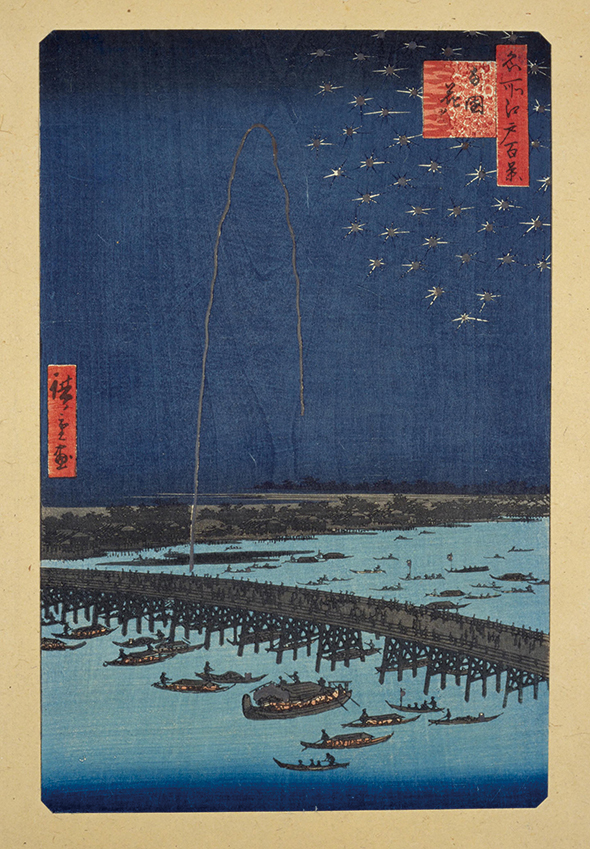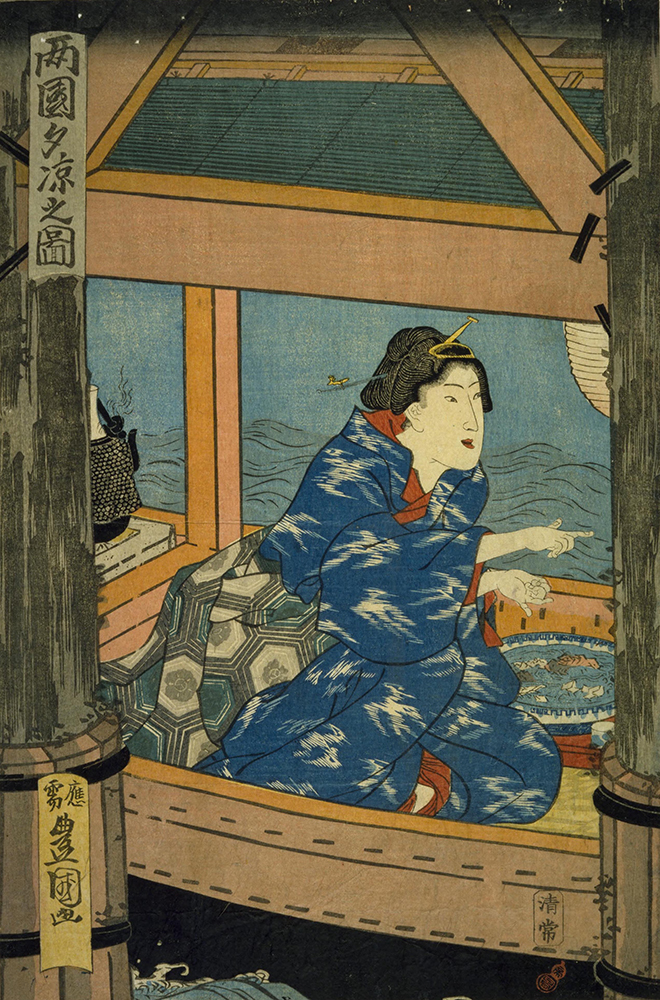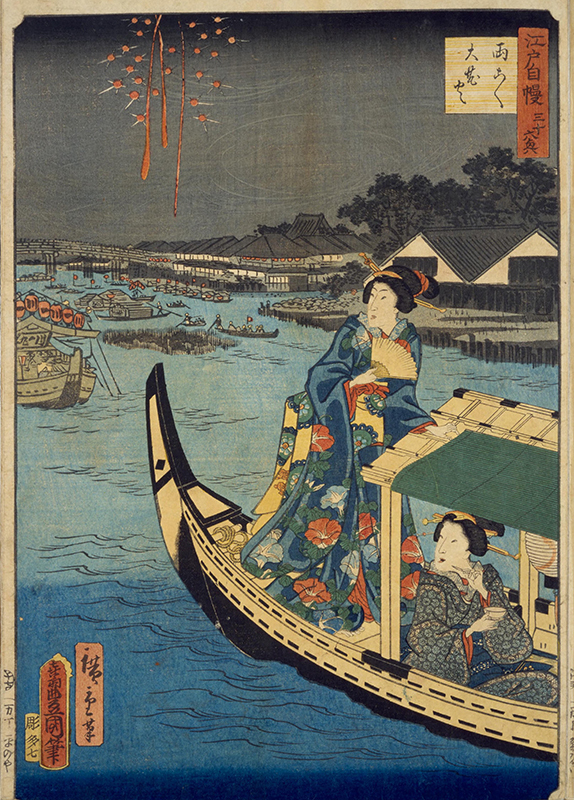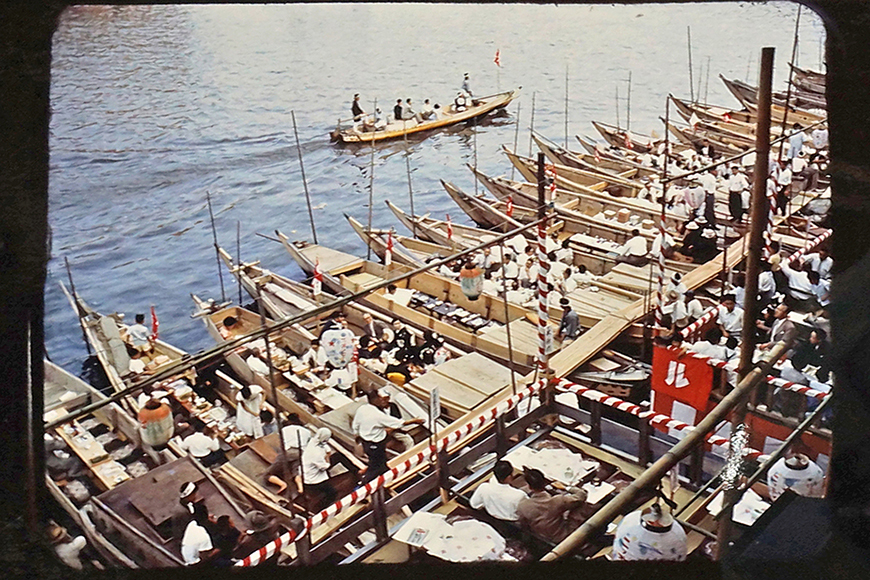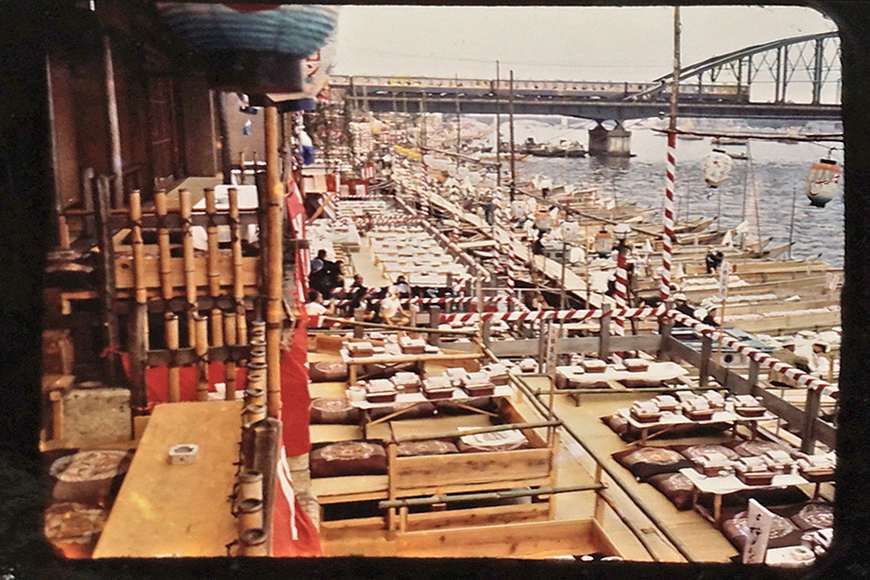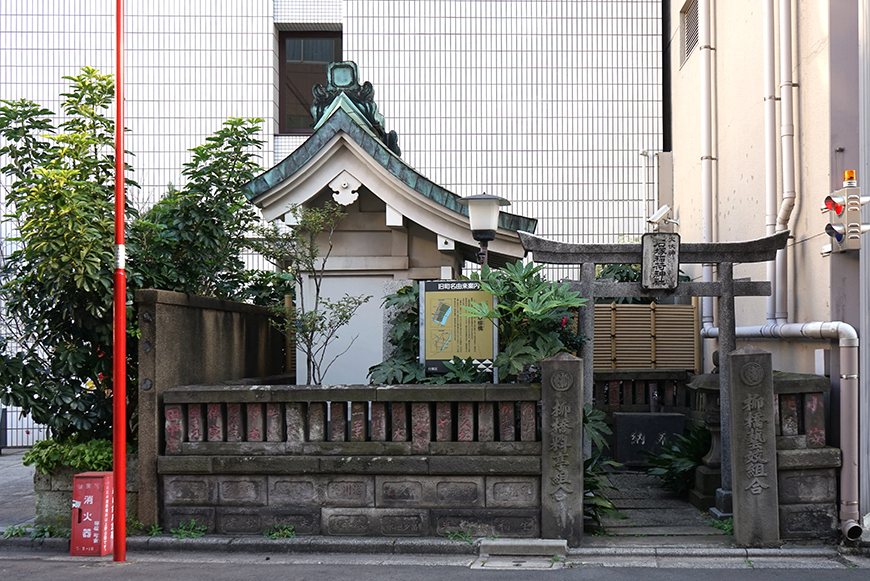"One Hundred Famous Views of Edo: Fireworks at Ryogoku" by Hiroshige Utagawa (Ando), 1858 (Courtesy of the National Diet Library)
Many visitors seeing fireworks from Ohashi (the present-day Ryogoku Bridge) and houseboats on the Sumida River are depicted.

"Edo genre color print, a picture of a woman enjoying cool evening breeze at Ryogoku" by Toyokuni Utagawa (portion, Courtesy of the National Diet Library)

"36 brilliant events in Edo, large fireworks at Ryogoku" by Toyokuni Utagawa, Hiroshige (1864) (Courtesy of the National Diet Library)

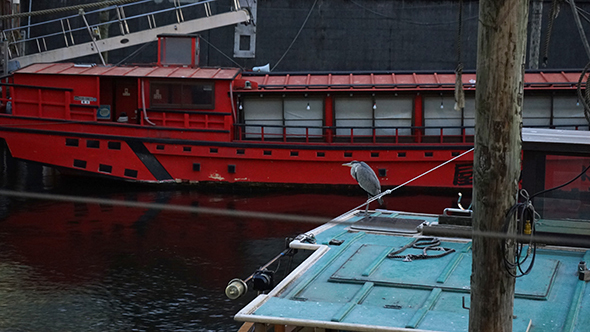
The fireworks event held on the day of a river festival of Ryogoku, which was suspended during the Second World War, resumed in 1948 after "Ryogoku Hanabi Kumiai," a fireworks association in Ryogoku, was reorganized by "Yanagibashi Ryotei Kumiai," a Japanese-style restaurants association in Yanagibashi, in the same way as it was organized before the war. At that time, Japanese-style restaurants in Yanagibashi placed raised platforms on the riverbank, and set houseboats afloat on the river, which were packed with many visitors. (Taken by Yukio Yoshida, Owned by Funayado Komatsuya)

Although the bridge built in 1698 at a site where the Kanda River flows into the Sumida River was originally called "Kawaguchi Deguchi no Hashi," it came to be called "Yanagibashi" during the Kyoho Period because it was located at the edge of Yanagihara Bank. Pleasure-boat offices have been built side by side at the bridge foot, and prospered since the Edo Period. The Yanagibashi area (the present-day Yanagibashi, Taito City) has been known as a red-light district since the end of Edo and Meiji Periods, and many writers and artists have sought subject matters in the area. For example, Kiyochika Kobayashi created "A Distant View of Ryogokubashi Bridge from Motoyanagibashi," Shiki Masaoka compiled a haiku collection "Kanzan Rakuboku" and Toson Shimazaki lived in a neighborhood of the present-day Yanagibashi 1-chome, and described the Yanagibashi area in the Taisho Period in his essay "Shin Katamachi-nite" and novel "Chinmoku." Shotaro Ikenami also wrote about the area in his novel "Kenkaku Shobai" and others. Many people still visit the area, looking for a flavor of the Edo Period. The Yanagibashi Bridge was replaced with an iron bridge in 1887, and replaced again with the present-day uniquely shaped bridge in 1929.
"One Hundred Famous Views of Edo: Fireworks at Ryogoku" by Hiroshige Utagawa (Ando), 1858 (Courtesy of the National Diet Library)
Many visitors seeing fireworks from Ohashi (the present-day Ryogoku Bridge) and houseboats on the Sumida River are depicted.

"Edo genre color print, a picture of a woman enjoying cool evening breeze at Ryogoku" by Toyokuni Utagawa (portion, Courtesy of the National Diet Library)

"36 brilliant events in Edo, large fireworks at Ryogoku" by Toyokuni Utagawa, Hiroshige (1864) (Courtesy of the National Diet Library)













